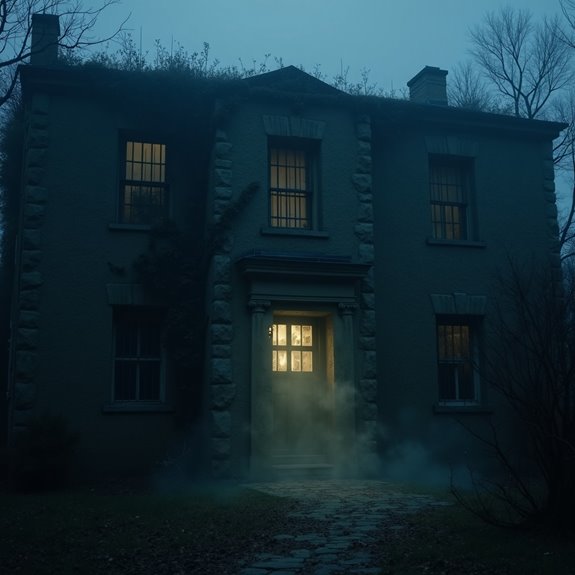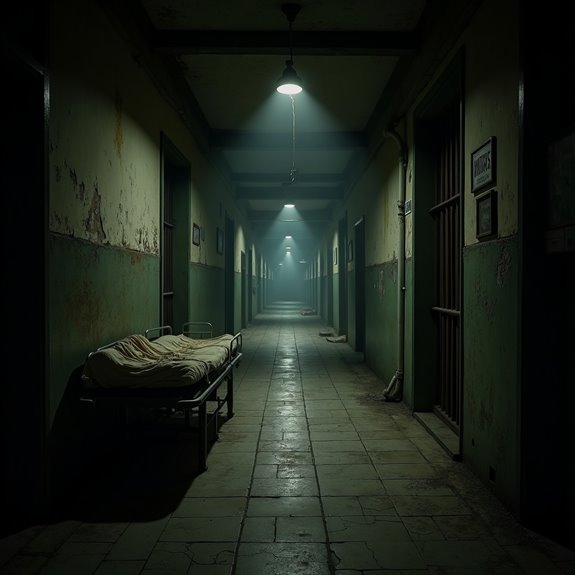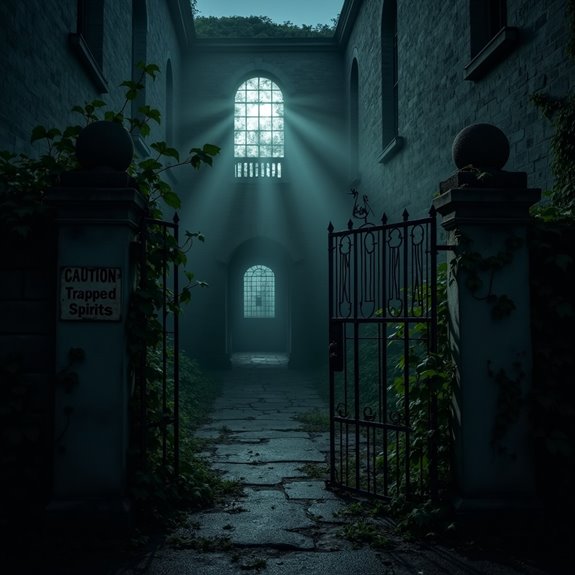Do Haunted Asylums Trap Restless Spirits?
Haunted asylums often spark debate about whether they truly trap restless spirits. These facilities, designed for healing, became sites of neglect and suffering, leaving behind emotional imprints. Many report strange occurrences and sightings, prompting questions about the connection between past traumas and present hauntings. What keeps these spirits bound to their former homes, and what secrets might they still hold? The exploration of these mysteries could reveal more than just ghostly tales.
Introduction

As many believe, haunted asylums hold more than just crumbling walls and forgotten memories; they’re often steeped in tales of restless spirits. The combination of dark histories, unshared sufferings, and unanswered questions seems to create an atmosphere ripe for supernatural occurrences. Visitors recount chilling encounters, feeling unseen presences brush past them or hearing ghostly whispers echoing through the cold, empty halls. These places often become sites of fascination and dread, drawing ghost hunters and curious adventurers alike. Some argue that the energy of the past lingers, keeping spirits tethered to the grounds, while others dismiss such claims as mere folklore. Regardless, the haunting tales of asylums endure, leaving a lasting impression on those who dare to explore their eerie confines.
Asylum Construction and Purpose

Constructed primarily in the 19th and early 20th centuries, many asylums were designed with a grand vision of providing care for the mentally ill. Architects aimed to create serene environments, often incorporating natural light and open spaces to foster healing. These facilities typically featured large wards and numerous rooms, accommodating patients with various mental health conditions. Over time, however, the purpose of asylums shifted, leading to overcrowding and inadequate treatment. Institutional design, once emblematic of compassion, became synonymous with neglect and control. The isolation of these structures often contributed to an atmosphere of despair. While initially intended as sanctuaries for recovery, many asylums morphed into places of institutionalization, reflecting society’s broader struggles with mental health care and understanding.
Notable Cases or Sightings

While many asylums have fallen into decay, their haunting legacies draw ghost hunters and paranormal enthusiasts hoping to encounter restless spirits. One of the most famous cases involves the Willowbrook State School in New York, where numerous sightings of shadowy figures and unexplained noises have been reported. At the infamous Trans-Allegheny Lunatic Asylum in West Virginia, visitors often recount experiences of feeling watched, with many capturing orbs and apparitions in their photographs. Meanwhile, the Yorktown Memorial Hospital in Texas is notorious for ghostly sounds, like unexplainable footsteps and disembodied voices. Each of these sites adds to the chilling narrative of haunted asylums, inviting those curious about spirits trapped within their desolate walls.
Common Theories or Explanations
Many believe that the hauntings within asylums are linked to the intense emotions and trauma experienced by their former patients. These locations often witnessed harrowing treatments and neglect, leaving spiritual imprints. Some theories suggest that residual energy can manifest as ghostly apparitions, tied to specific areas where pain occurred. Others propose that trapped spirits may linger, unable to move on due to unresolved issues or a strong attachment to the site. Additionally, environmental factors—like electromagnetic fields and structural decay—might contribute to feelings of unease and sightings. Skeptics argue that psychological factors, such as suggestion and expectation, could also play a role in perceiving hauntings, pointing to the power of the human mind in interpreting unexplained experiences in these eerie settings.
Frequently Asked Questions
How Do I Protect Myself From Trapped Spirits?
To protect himself from trapped spirits, he should carry protective amulets, visualize a protective light surrounding him, maintain a positive attitude, and avoid engaging in any spirit communication. Staying grounded helps keep negative energies at bay.
Can Spirits Influence the Living in Asylums?
Spirits can influence the living in asylums. They often evoke feelings of sadness or fear, and some visitors report experiencing sudden mood changes or visions, suggesting a strong connection between the spiritual domain and human emotions.
What Signs Indicate a Haunted Asylum?
Unexplained cold spots, flickering lights, and disembodied voices often indicate a haunted asylum. Visitors report strange noises and feelings of being watched, while equipment malfunctions and shadowy figures heighten the eerie atmosphere during explorations.
Are There Safe Ways to Explore Haunted Sites?
Yes, exploring haunted sites safely involves researching beforehand, visiting with a group, following local laws, and ensuring proper gear. They recommend respecting the location and remaining aware of one’s surroundings to avoid dangerous situations.
How Do I Connect With a Restless Spirit?
To connect with a restless spirit, she recommends using meditation, setting intentions, or employing spiritual tools like pendulums or tarot cards. Engaging respectfully creates a space where communication can happen, fostering a connection with the other side.
Related Posts

Do Ghostly Children Still Haunt the Bridges of Texas?

What Roams the Halls of the Queen Mary After Dark?
